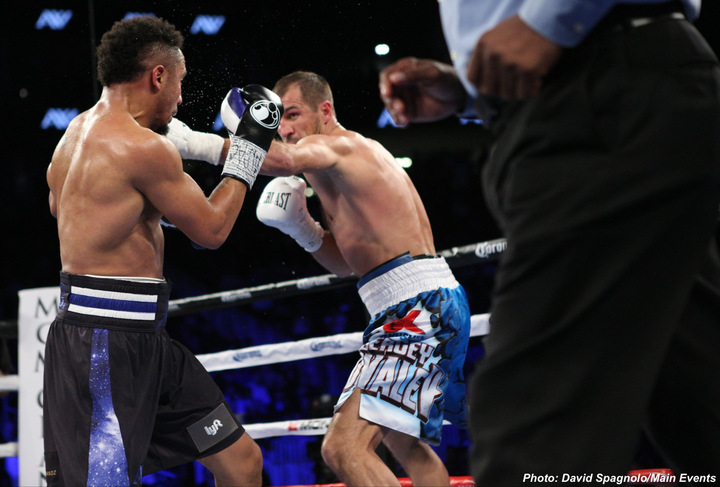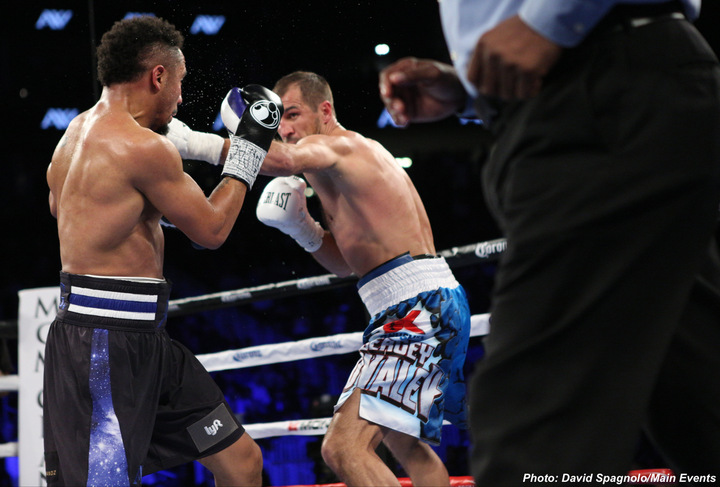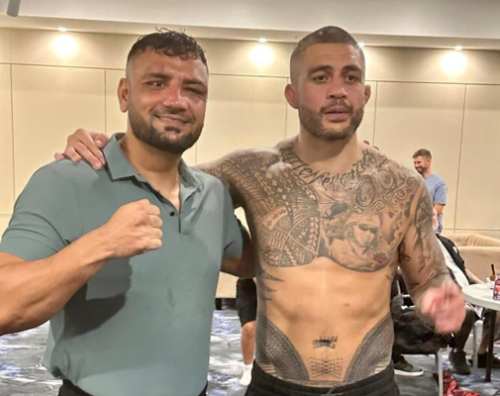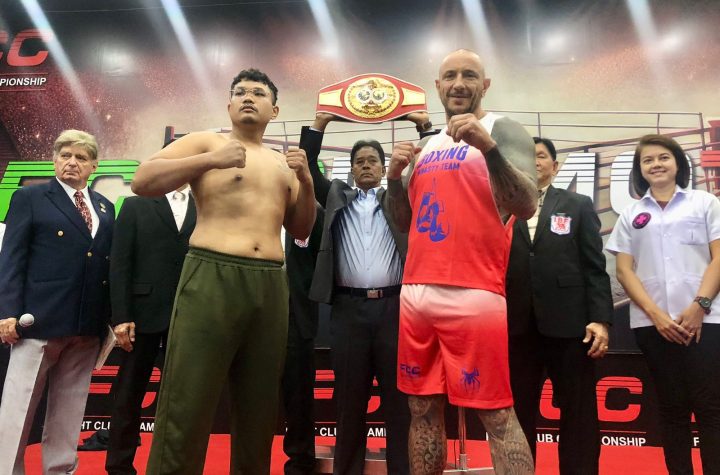

Boxingnews24.com
By Donavan Leonard: I know that I am not alone in my frustration of the sport of boxing. Terrible judging, “fights” that do not live up to the hype, and overpriced PPV’s can lead fans such as myself wondering why they persevere keeping up with this antiquated sport. Then bouts such as Franviso Vargas – Orlando Salido and Anthony Joshua – Wladimir Klitschko remind us of the joy that can only be found in boxing. However, there are some things that could be done to upgrade the sport as a whole. Rules changes happen every year in the NFL, the most popular sport in the USA, so if it is good enough for the NFL, it should be good enough for boxing. Here are just a few of my ideas to help move boxing from the 1920’s to the 2000’s.
Properly define and apply the rules of scoring a bout. If you examine the 10-point must system, (abae.co.uk/aba/index.cfm/news/aiba-rules-the-scoring-system), you will note there is no mention of a knockdown and how it impacts the scoring. Lazy judges almost always score a 10-8 round even if a knockdown was incorrectly ruled, was more of balance than damage, and even if the fighter who scored the knockdown was clearly being beaten during the round. 10-9 is a close round, 10-8 is one with dominance, 10-7 is total dominance. In a bout where one fighter clearly wins 6 rounds and the other fighter “gets the nod” in 6 close rounds, the fighter who wins his 6 rounds the clearest should win the bout. For example, Kovalev vs Ward. I think many observers believe Kovalev clearly won 5 rounds. They were not really close rounds. Four would be 10-8, one would be 10-7 (not because of the knockdown, but the total dominance in the round, which happened to include a knockdown) for Kovalev. Ward won 2 rounds ‘clearly’ (10-8) and 5 more were close (10-9). The final tally would be 111-109 for Kovalev. I think this would increase appeal to new/casual observers, as a fighter gets more credit for ‘big’ rounds, and would hopefully reduce the number of decisions which go to a fighter who happened to get the benefit of the doubt in most, if not all, truly close rounds.
Instant replay. In our era of television, how difficult can it be to get calls right? This can be used to determine the cause of a cut (butt or punch), and can be done almost instantaneously with the number of staff working the televised bouts. The importance of using this technology is simple. It validates the call, but it also impacts the bout. If a cut is incorrectly ruled to be from a punch, then the fighter who suffered the cut can lose by knockout as opposed to a no-contest or going to the scorecards. The economic impact of a loss in boxing can be enormous, and the physical danger for these gladiators is real, so every effort should be made to get the call right. This can also be applied to knockdowns. If scoring is done properly, (by what is seen not what is ruled), then this would not be necessary. However, in lieu of judges actually using the rules of scoring as discussed above and basing the scores on what their eyes have seen, then a replay could show that a knockdown was improperly ruled (such as Ray Bertran – Jonathan Maicelo, where Bertran was clearly knocked down by a headbutt, or that Maicelo was knocked down at the end of the round and improperly ruled a slip), and then the judges can adjust their scorecard accordingly.
Five minutes to tend to cuts caused by butts. This is another no-brainer, in my opinion. If a fighter gets hit low, accidental or on purpose, he has five minutes to recover. This is usually about four plus minutes longer than necessary, but it does give him a chance for a full recovery before the action resumes. If a fighter gets butted, accidental or on purpose, the doctor looks at the cut, and then waves off the fight if it looks bad. Even if it isn’t bad enough to stop the bout, there could still be blood getting into the eye, causing a distinct disadvantage when the action recurs. Shouldn’t that fighter get the same five minutes to recover and his corner be able to use that time to tend to the cut? In many cases, the bleeding could be stopped, the fight could continue, and the fighter could adjust his game plan knowing that the cut could re-open at any time. It would also allow many bouts to continue, so that the fans would not feel cheated after a two-round no-contest. The fighters win from having an opportunity to possibly continue to fight without a huge disadvantage, and the fans win from seeing more action for which they paid to see.
Why don’t these changes get made? I don’t know. I feel that biggest reason is that the sanctioning bodies collect their checks and move to the next bout. Most of the attention in bouts is on the scoring, and if they feel it is egregious enough, they order a rematch. That means..more checks to collect. I do not know if it will make a difference, but you can contact them with your questions/issues, and maybe if enough fans make the effort, then the sanctioning bodies will listen. I believe that if the literally millions of fans get involved, changes will be made. Here are the email addresses provided on the websites for the WBA/IBF/WBC.
WBA– info@wbaboxing.com IBF– jsalazar@ibfboxing.com WBC– contact@wbcboxing.com
There are many more ways the sport could help itself, and fortunately for us fans, 2017 seems to be hitting the most important one—getting the fights right. The year has already been a great one, and fights like Spence-Brook, Andre Ward – Sergey Kovalev II, Gennady “GGG” Golovkin – Saul “Canelo” Alvarez are still to come.





More News
IBF Asia Heavyweight Title Fight: Bisutti vs. Nattapong
Liu Gang, Brico Santig Join Forces
Highland’s Double Impact: August 18 at Lumpinee